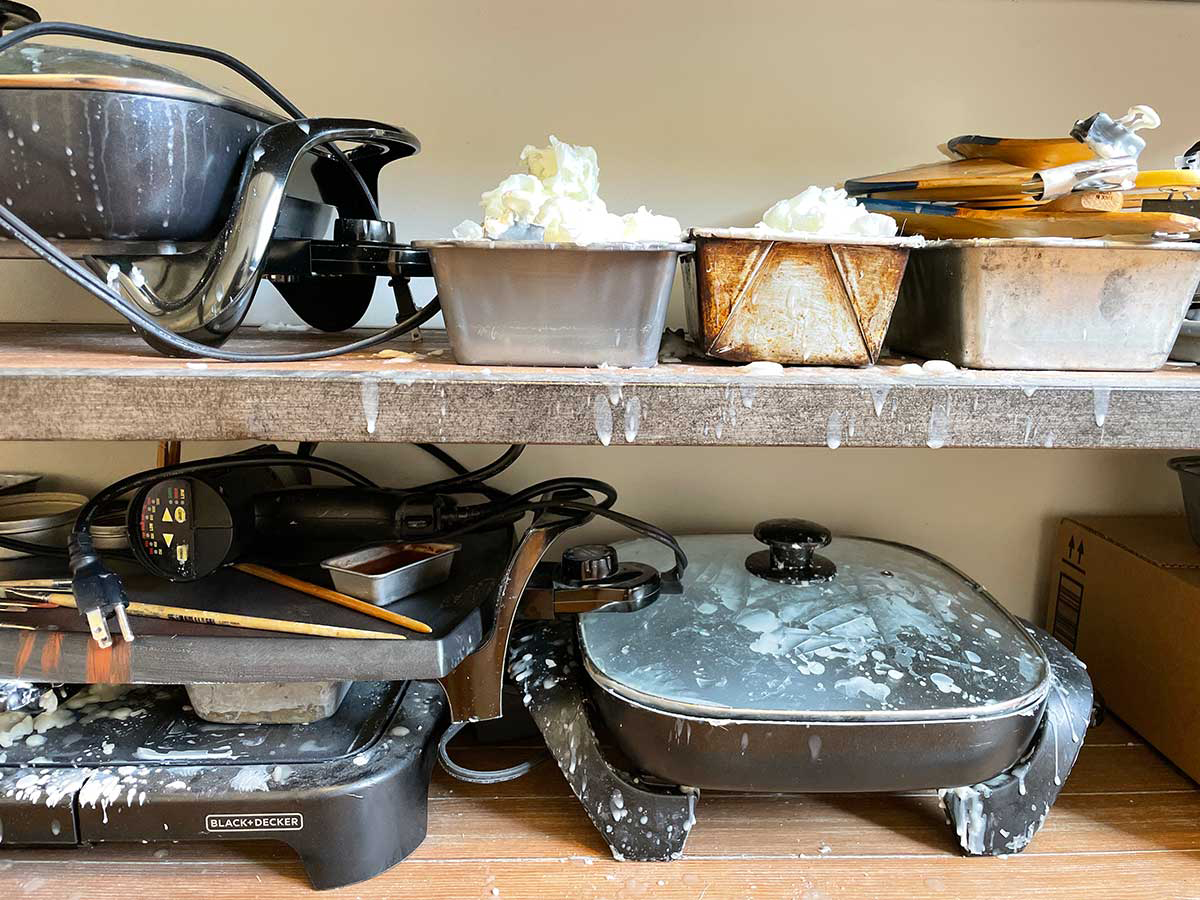We were lucky to catch up with Dianne Poinski recently and have shared our conversation below.
Alright, Dianne thanks for taking the time to share your stories and insights with us today. We’d love to hear the backstory behind a risk you’ve taken – whether big or small, walk us through what it was like and how it ultimately turned out.
After many years of creating and selling hand-colored black-and-white photographs, I wanted to try something else, so I signed up for a five-day photo encaustic workshop in Portland, Oregon.
Shortly after taking that class, a gallery approached me about having a solo show the following year. I said yes and told them I would exhibit original photo encaustic pieces. I knew this would either be a good idea or a bad one. As it turned out, it was both.
The learning curve for this process is steep. While preparing for the show, I had many failures and created pieces I knew I could not show. There were tears and doubts, and many times, I was ready to give up and tell the gallery I would just be showing framed photographs.
But I kept going, and after redoing some pieces a week before the show was to be installed, I was able to deliver on my promise.
That was ten years ago, and if I had not scheduled that gallery show, I probably would have given up trying to learn how to make photo encaustics. Instead, it has become my primary art form and is what I show in galleries and my studio.

As always, we appreciate you sharing your insights and we’ve got a few more questions for you, but before we get to all of that can you take a minute to introduce yourself and give our readers some of your back background and context?
While attending college to pursue an accounting degree, I took a black-and-white photography course to help satisfy the art requirement. I soon became the first to get to class and the last to leave! Soon, I abandoned the idea of becoming a CPA and immersed myself fully in photography.
After many years of shooting film and printing in the darkroom, I slowly (sometimes kicking and screaming) transitioned into digital photography and felt my passion for the art form reignite. Learning new skills and taking advantage of technological advances has made it possible for me to create images that once only existed in my imagination.
I love any process that allows for a more “hands-on” experience with my work. For over twenty years, I hand-colored my black-and-white prints. In 2014, I took a “photo encaustic” workshop and found a new way to create original art with my photographs using beeswax and paint.

How about pivoting – can you share the story of a time you’ve had to pivot?
Shortly before the recession that began in 2008 hit, I had moved from a small studio to a much larger one. At that time, my primary source of income came from sales of my art during open studios and the monthly art walks. Wanting to keep this studio, I decided to start offering workshops in hand-coloring black-and-white photos. I found that people at this time were more willing to spend money on experiences than objects.
I emailed my list announcing the class and had flyers available in the studio. The response was overwhelming. Since I had never done anything like this, I was terrified but also committed to providing quality instruction in a way that inspired the students.
After the success of the first class, I scheduled another one that quickly sold out. I continued teaching this class for about five years, having some students travel two or three hours to attend! The response I got the most from the students was how relaxing it was to sit and create. The conversations were also lively, and everyone supported everyone else.
While I eventually moved into a smaller space, I still maintain a studio in this building and am grateful I took a chance and found a way to keep going during a time of great uncertainty.

Is there something you think non-creatives will struggle to understand about your journey as a creative? Maybe you can provide some insight – you never know who might benefit from the enlightenment.
I believe my non-creative friends and family do not understand my drive to create and my need for solitude and routine. Sometimes, I wish I could turn off my desire to make art. Even when I am not doing it, I am thinking about it.
I also need to make art for my mental health. I sometimes use it as a distraction when feeling unsettled or anxious. Also, being self-employed, some people think you have a lot of free time for lunch or coffee during the day. As a people-pleaser, I have sometimes struggled to say no and end up feeling resentful or angry with myself.
Contact Info:
- Website: https://www.diannepoinski.com
- Instagram: dpoinskiphoto



Image Credits
The 2 images of me in my studio – photo credit: Aniko Kiezel
All of the other images are by me.


